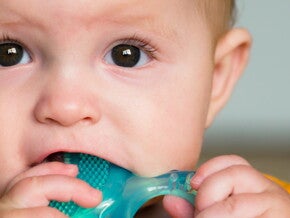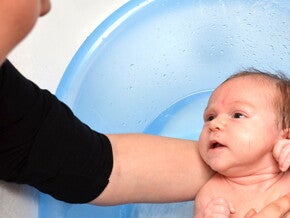
Breastmilk is uniquely designed for each individual baby! From the time the baby is born breastmilk changes…. From colostrum, the ‘first immunisation’ to transitional milk and eventually to mature milk, each phase provides the best nutrition a baby can get.
A Breastfeeding experience which is enjoyable and beneficial to both mom and baby depends on a relaxed, well-nourished mother who approaches this experience positively and with confidence. Breastfeeding should not be painful, although the nipples are likely to be tender during the first few days.
As a mom your decision to breastfeed is a very important one. Did you know it also requires some planning?
Planning for breastfeeding:
Gather as much information as possible and learn basic skills by reading attending a breastfeeding course while pregnant and join a breastfeeding support group.
Use your hospital stay to learn as much as possible about breastfeeding and mothering.
Ask for advice – try to establish a relationship with a knowledgeable person to deal with conflicting advice.
When you are admitted to the health care centre it is very important that you inform the staff of your decision to breastfeed. This means that your baby should be fed within 1 hour after he/she is born, and thereafter on demand, To help the staff yYou should insist on rooming-in, where your baby stays with you 24 hours a day.
You do not need to do anything with your breasts, no cream or rubbing or massaging. Nature has been so creative that your breasts will look after itself… the Montgomery glands are tiny pimple-like swellings which secretes a substance that lubricates and protects the areola. These glands are more prominent during pregnancy and the breastfeeding period, but return to normal once you stop breastfeeding.
Planning to go back to work?
Did you know you can continue to breastfeed when you go back to work?
This also involves some planning and a lot of support from your family, friends and workplace….
Breastfeed your baby frequently during the night, before you go to work and again when you return home. Some mothers work close to home, or have in-house childcare facilities of breastmilk express rooms, which makes it possible to breastfeed or express during the day – keep in mind our country’s legislation allows for breastfeeding breaks! When expressing, keep the milk cool.
If there is not a fridge available, keep the milk cold in a cooler bag with icepacks. The expressed breastmilk can be used the following day to feed your baby. Share with your employer the following ideas of an express room at your place of work….

DID YOU KNOW….
Your breastmilk is ideally suited for your baby. “Did you know that having sea fish twice a week, will increase the omega 3 fatty acid content in your breastmilk.”
The Did You Knows of Breastfeeding:
- Breastfed babies have a distinctive Scent? Breastfed babies can practically pick their moms out of a line-up based on smell alone. Your baby knows the scent of your breast milk. Each woman’s milk is unique to them and your baby knows just which boob his next meal is coming from.
- Breastfeeding doesn’t always come naturally for many moms, and for the first few weeks it is a work in progress. Be patient and get help to make sure you are set up to feed your baby for as long as you wish.
- Your breast milk adjusts to the climate. During a heatwave, when temperatures increase above 30˚C, your milk will adjust accordingly to meet the needs of your baby’s thirst and hydration.
- Bigger isn’t necessarily better. The amount of breast milk a mom produces has nothing to do with her breast size. Small-breasted women do just fine. Women with implants can also successfully feed their babies.
- Many moms have varied production of breastmilk in each breast. Some women produce more on the right than the left, or otherwise. This is often a result of where mom and baby feels most comfortable when feeding.
- You are what you eat. Babies are more likely to try and enjoy new flavours if mom's been eating them while nursing. Breastmilk takes on the taste of the food you are eating. This means that you are developing a well-rounded palate in your baby for starting solids.
- Who needs the gym? It takes energy to maintain a milk supply! Consistent breastfeeding burns about 500 calories per day.
- The quality of breastmilk changes not only as your breastfeeding journey progresses, but also during the day, with the highest quality of breastmilk being produced in the early morning. E.g. 3am.
DID YOU KNOW….
Your breastmilk is ideally suited for your baby. “Did you know that having sea fish twice a week, will increase the omega 3 fatty acid content in your breastmilk.”
DID YOU KNOW….
Breastfeeding is not the cause of sagging breasts! Sagging breasts is a normal process that is related to pregnancy hormones, so if you breastfeed or not…. Breasts may sag
DID YOU KNOW….
Breastfeeding is NOT sore! Although the nipples may be tender the first few days, it should never be painful. If it is sore to breastfeed it is likely that your baby is not latching well. Seek support from a lactation consultant or friend /health care professional or someone you trust who has successfully breastfed before
















